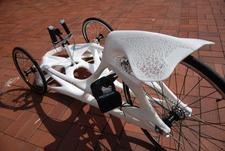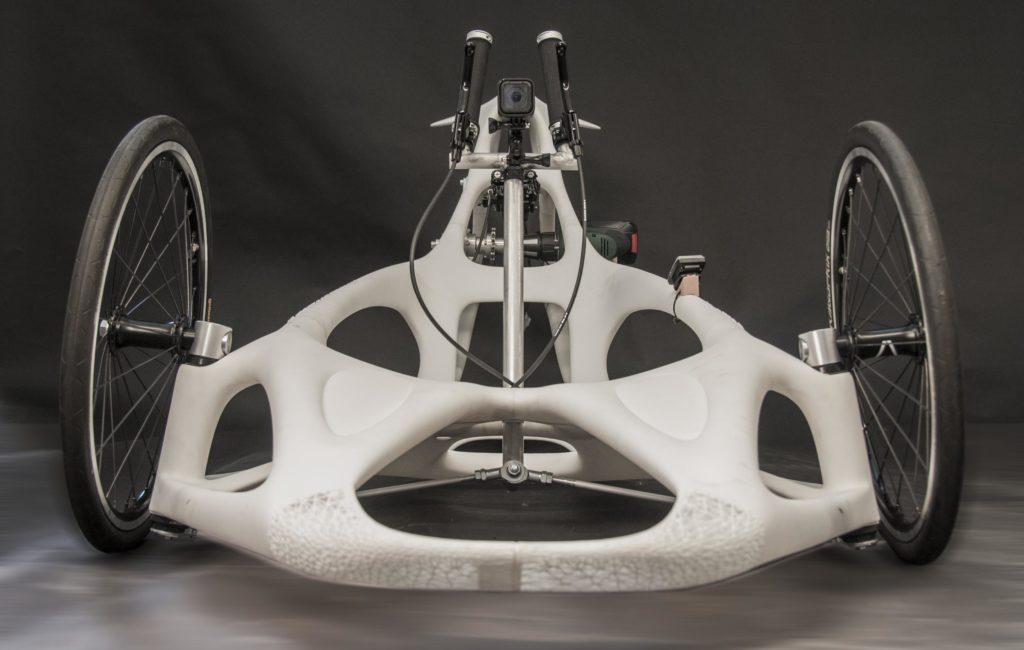 There are a lot of unusual racing events that take place around the world, but I never would have imagined racing vehicles powered by electric screwdrivers. That is, however, exactly what takes place at the biennial Akkuschrauberrennen cordless screwdriver race on the campus of HAWK Hochschule (HAWK University of Applied Sciences and Arts) in Hildesheim, Germany. It’s like a modernized, university-level version of the classic soapbox derby, which has been turning children into competitive makers and drivers since the 1930s. In the Akkuschrauberrennen, teams of up to six students from area universities must build vehicles that can carry at least one person and can be driven by an electric screwdriver (presumably, sonic screwdrivers are banned); those vehicles are then raced against each other, with this year’s competition taking place on June 25.
There are a lot of unusual racing events that take place around the world, but I never would have imagined racing vehicles powered by electric screwdrivers. That is, however, exactly what takes place at the biennial Akkuschrauberrennen cordless screwdriver race on the campus of HAWK Hochschule (HAWK University of Applied Sciences and Arts) in Hildesheim, Germany. It’s like a modernized, university-level version of the classic soapbox derby, which has been turning children into competitive makers and drivers since the 1930s. In the Akkuschrauberrennen, teams of up to six students from area universities must build vehicles that can carry at least one person and can be driven by an electric screwdriver (presumably, sonic screwdrivers are banned); those vehicles are then raced against each other, with this year’s competition taking place on June 25.
 The Akkuschrauberrennen has been taking place for nine years, and each iteration of the race has a different twist (of the screwdriver?) or theme for an extra challenge, as well as for practical application of the engineering students’ practical skills. The 2013 race, for example, required that all vehicles be made from paper. This year’s theme was 3D printing: at least 50 cm of the organically, sustainably designed vehicles had to be 3D printed. 11 teams competed in this year’s race, including Team Ostfreezer from the Hochscule Emden/Leer, which had won first place three times already. They took the 3D printing challenge even further than they had to, by creating a vehicle with an entirely 3D printed frame.
The Akkuschrauberrennen has been taking place for nine years, and each iteration of the race has a different twist (of the screwdriver?) or theme for an extra challenge, as well as for practical application of the engineering students’ practical skills. The 2013 race, for example, required that all vehicles be made from paper. This year’s theme was 3D printing: at least 50 cm of the organically, sustainably designed vehicles had to be 3D printed. 11 teams competed in this year’s race, including Team Ostfreezer from the Hochscule Emden/Leer, which had won first place three times already. They took the 3D printing challenge even further than they had to, by creating a vehicle with an entirely 3D printed frame.
As engineering students, the team members were already familiar with digital design and 3D printing, but needed to avail themselves of some professional assistance in terms of obtaining the resources required to actually create their 3D printed car. For help with their design, Team Ostfreezer turned to Materialise, who assisted them in designing the car’s body with Materialise Magics and Materialise 3-matic software. The result was not only sturdy and functional but attractive to look at, with its curving lines and webbing-like textures that, according to Materialise, would not have been possible without 3D printing. Materialise printed the frame out using laser sintering technology and shipped it over to the German students, who glued the various parts together to create their sleek, speedy, screwdriver-powered car.

Around 5,000 people gathered to watch the Akkuschrauberrennen, which took place on a bright, sunny day in Hildesheim. Each team was given exactly 60 seconds to start up their cars with their electric screwdrivers and then give their teammates a starting push onto the track, which featured several sharp turns and obstacles to challenge the drivers. Alas, Team Ostfreezer did not add a fourth title to their record this year, though they did make the quarter finals. First place was taken by Team MOPET from HAWK Hochscule’s Hildesheim campus, despite an impressive crash in their first race. There’s definitely something to be said for home track advantage. You can watch a few highlights from this year’s race below. Discuss further in the Race Featuring 3D Printed Car Frame forum over at 3DPB.com.
[Source/Images: Materialise]
Subscribe to Our Email Newsletter
Stay up-to-date on all the latest news from the 3D printing industry and receive information and offers from third party vendors.
You May Also Like
Precision at the Microscale: UK Researchers Advance Medical Devices with BMF’s 3D Printing Tech
University of Nottingham researchers are using Boston Micro Fabrication‘s (BMF) 3D printing technology to develop medical devices that improve compatibility with human tissue. Funded by a UK grant, this project...
3D Printing Webinar and Event Roundup: April 21, 2024
It’s another busy week of webinars and events, starting with Hannover Messe in Germany and continuing with Metalcasting Congress, Chinaplas, TechBlick’s Innovation Festival, and more. Stratasys continues its advanced training...
3D Printing Webinar and Event Roundup: March 17, 2024
It’s another busy week of webinars and events, including SALMED 2024 and AM Forum in Berlin. Stratasys continues its in-person training and is offering two webinars, ASTM is holding a...
3D Printed Micro Antenna is 15% Smaller and 6X Lighter
Horizon Microtechnologies has achieved success in creating a high-frequency D-Band horn antenna through micro 3D printing. However, this achievement did not rely solely on 3D printing; it involved a combination...





























